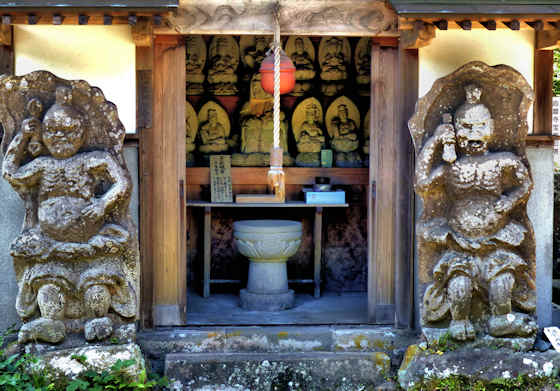Wednesday February 19th 2014.
I catch the first train out of Nagasaki to Nagasato and the sun is up by the time I start walking. The mountaintops to the north are white with snow but down here on the coast the wind is a little crisp but its blowing away the low clouds to reveal a blue sky mottled with high cloud. After a short walk I come to a road that is most unusual in Japan..... its is dead straight for 7 kilometers. Reason being it is on a dyke that stretches across the bay to the far shore.
This is the infamous Isahaya BayReclamation Project, a 2 billion dollar boondoggle that has destroyed the last major tidal wetlands in Japan. The rationale for its construction was to “reclaim” land to grow rice, but by the time it was completed in 1997 Japan had masses of unused agricultural land and farmers were being paid to not grow rice. Once the water stopped flowing out into the Ariake Sea the life of the wetlands began to disappear and the fishermen and nori harvesters of the Ariake Sea started to report reduced yields. As far as I know, there is currently a gridlock because of lawsuits of environmentalists and fishermen on the one hand who want the dike opening up, and those with a vested interest in the reclaimed land who want it to stay closed.
Halfway across the dike is a rest area and I am able to climb up for a bit of a view, to the south is the Shimabara Peninsula with Mount Unzen rising in the middle. All being well I will be walking over those mountains tomorrow. The long, straight slog across the mouth of the bay on top of the dyke was uneventful. I now follow the coast road east and then south. Whenever I get the chance I take detours away from the nosy and busy main road and stop in and explore shrines.
By late morning I am coming in to Kumini and here I cut inland to visit somewhere I discovered while exploring with Google Maps. Its an old “samurai district”, a collection of old samurai dwelling and walled streets dating back to the Edo Period. While the walls lining the streets still exist, many of the houses are of much more recent vintage, though there are a few old ones. The centerpiece however is the Nabeshima House, built by a lesser member of the family that ruled over what is now Saga, though Kunimni is now Nagasaki. Unfortunately, the main house is closed to the public while it is undergoing some renovation work, but the gardens were a pleasant surprise.
I wander back to the main road and continue down the coast when I start to see streetlamps shaped like crabs holding a soccer ball. Then I saw a giant version????? what the hell is that all about? Have they trained a species of giant crab to play soccer? Or is it that crab is the local specialty and the local high school soccer team often wins the national championships?
By now the coast road is running south and as one of the bright yellow local trains trundles by I contemplate hopping on for the last section down into Shimabara, but it has turned out to be a beautiful day with a clear blue sky so I ignore my legs grumblings and carry on walking.
I got into town and my booked hotel room as the sun had disappeared behind Mount Unzen but it was still light enough to explore some shrines near my hotel.




































































